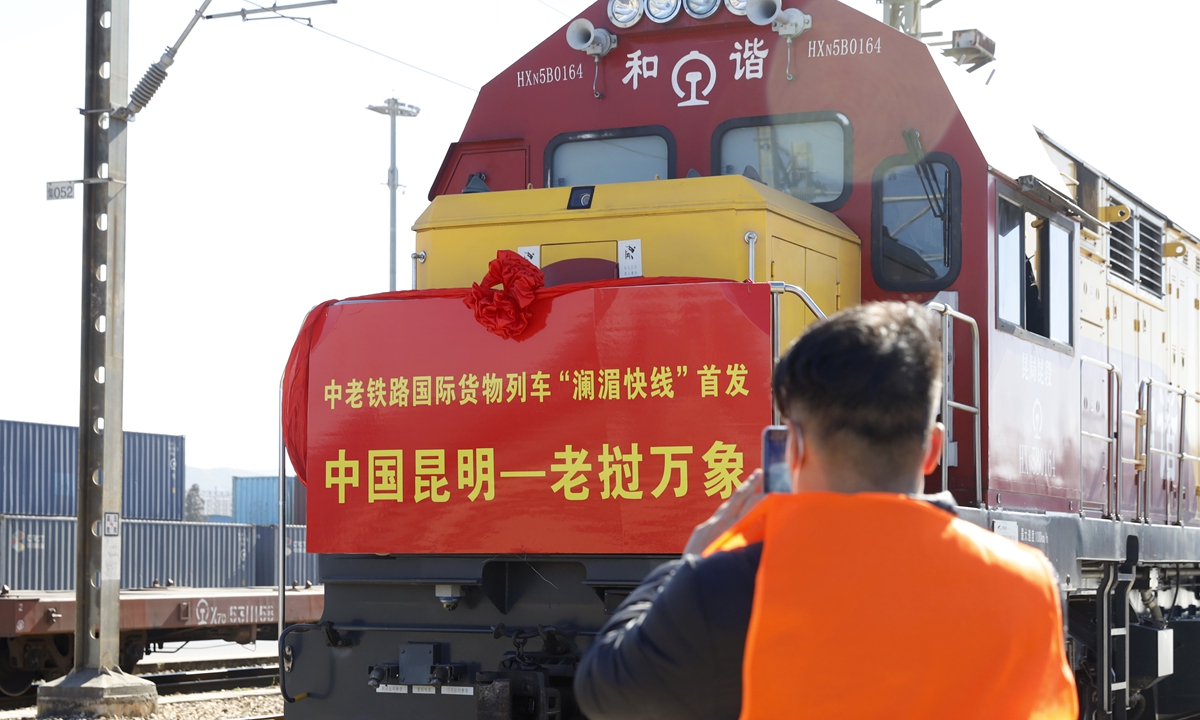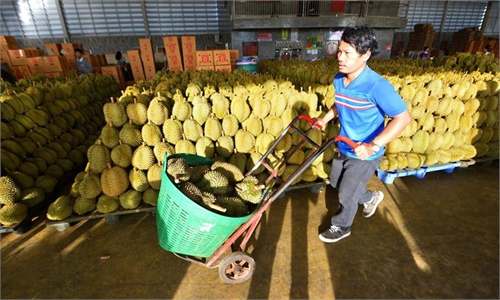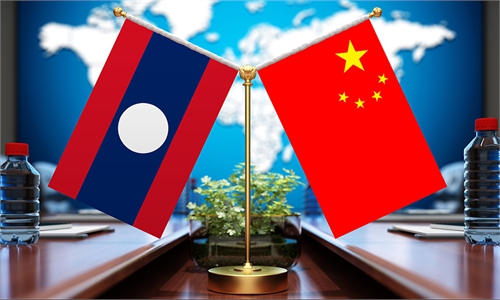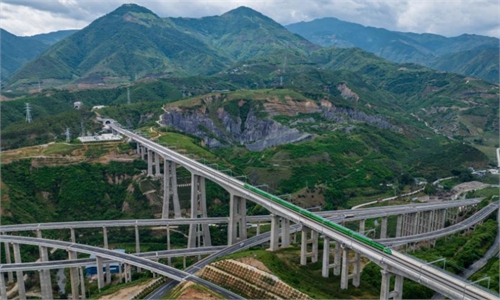
The first "Lancang-Mekong Express" train departs from Kunming, capital of Southwest China's Yunnan Province on January 11. The train, with a speed of 120 kilometers an hour and loaded with flowers and vegetables, will arrive in Laos on Tuesday. The journey only takes 26 hours, a significant reduction from normal international freight trains. Photo: cnsphotos
Since the beginning of 2022, the implementation of the Regional Comprehensive Economic Partnership (RCEP) has brought new opportunities for the development of the New Land-Sea Corridor in Western China. Multiple new routes have been added to the network, including one linking Southeast Asia, Qinzhou in South China's Guangxi Zhuang Autonomous Region and Xi'an in Northwest China's Shaanxi Province, read the statement.
The corridor has increased the transport of special goods such as raw sugar from India and cars from the Middle East. It has become a strong engine driving the economic and social development of China's western region and boosting the nation's new "dual circulation" development paradigm, in which the domestic and overseas markets reinforce each other, with the domestic market as the mainstay.
Tailored logistics plans have been designed for clients based on the corridor's ports, railway, airlines and other resources, and "green paths" have been set up to stabilize the industrial and supply chains along the New Land-Sea Corridor, and promote the in-depth integration of logistics, commerce and industry along the routes, China Railway said.
With the RCEP coming into effect, the corridor has played a bigger role in boosting trade between China and ASEAN. On April 8, four trains left Southwest China's Sichuan Province, carrying aluminum products, agricultural equipment, industrial equipment, chemicals and food to Laos, Thailand, Vietnam and Indonesia.
The corridor has also been expanded from the western region to the central province of Henan, with the RCEP-Beibu Gulf Port-Henan route starting operation on April 16.
The building of the corridor started five years ago. In 2019, China's National Development and Reform Commission issued a plan for the establishment of the New Land-Sea Corridor in Western China. According to the plan, the corridor is mainly located in China's western region, connecting the Silk Road Economic Belt in the north and the 21st Century Maritime Silk Road in the south.
It is of great significance to deepen land-sea two-way opening-up and promote the large-scale development of China's western region. From one route to a transport network, the corridor has transported more than 1.3 million TEUs of goods in the past five years, up 186 times from 2017.



